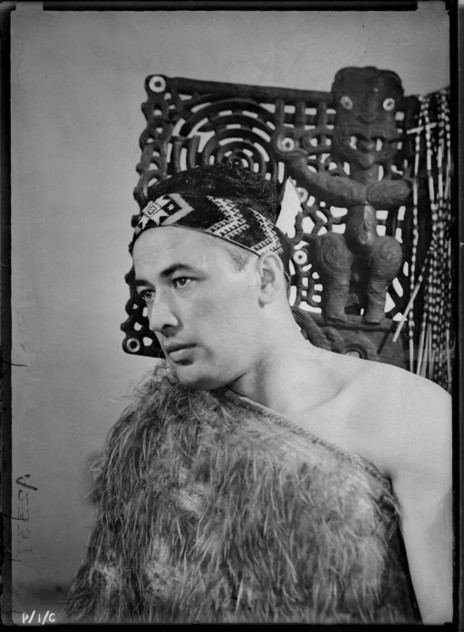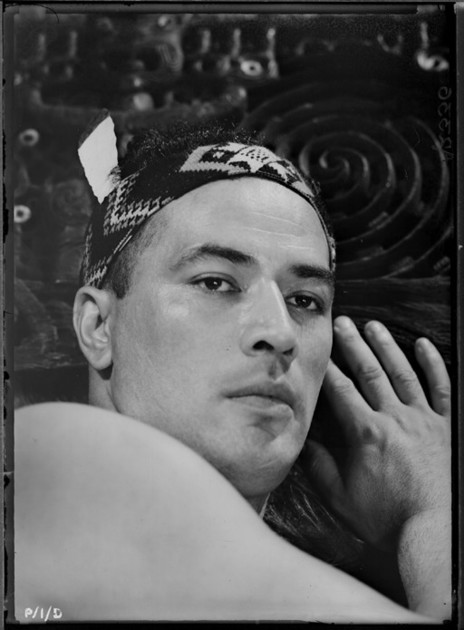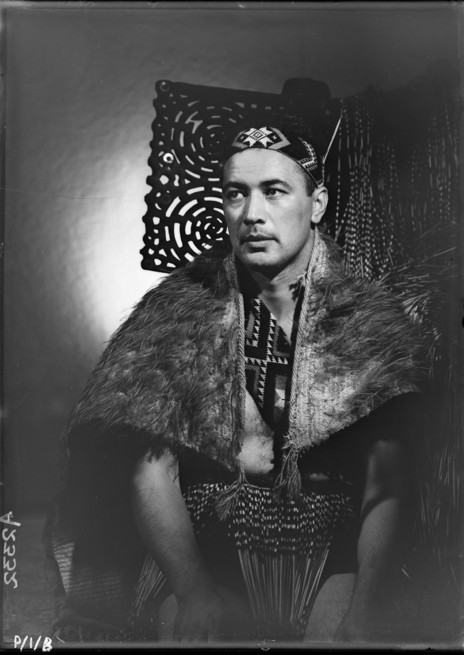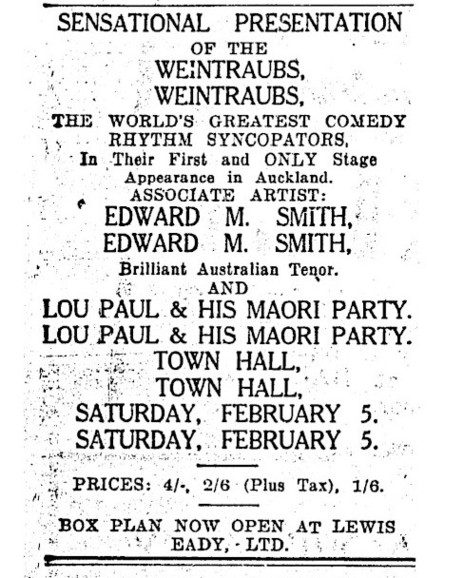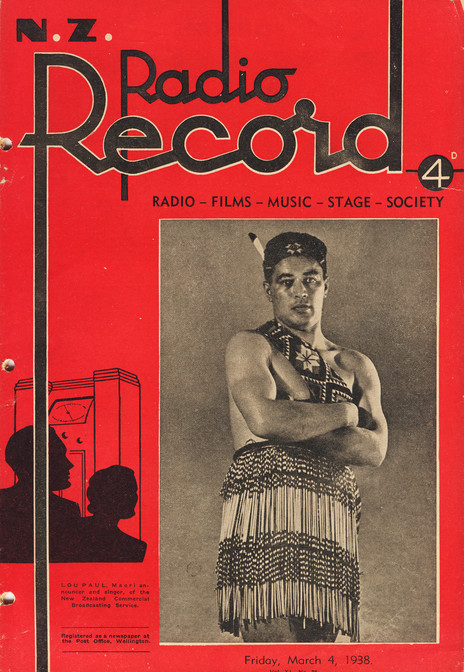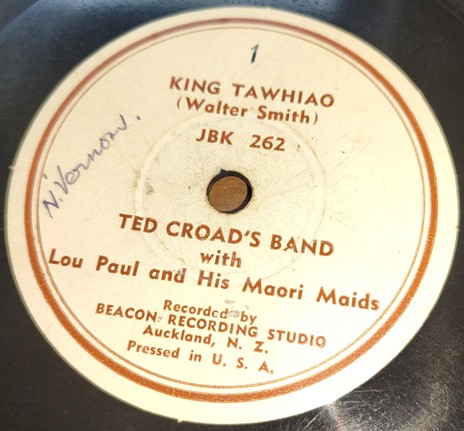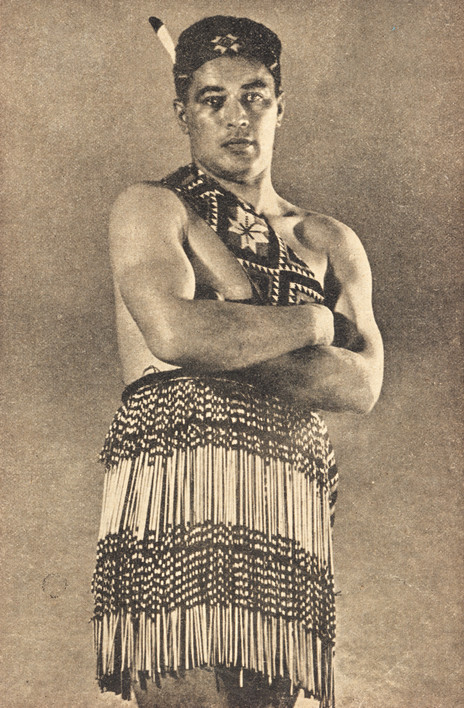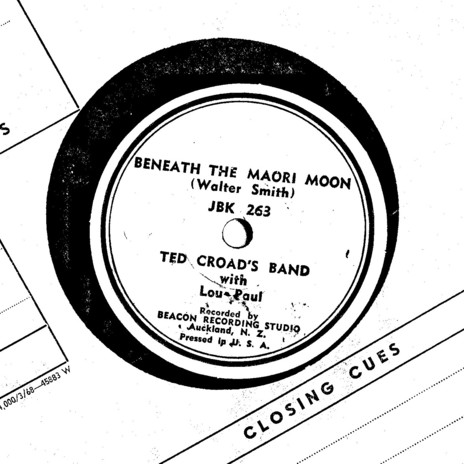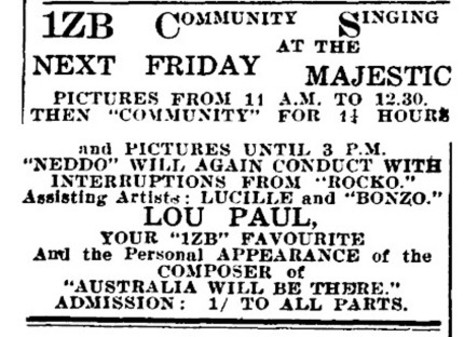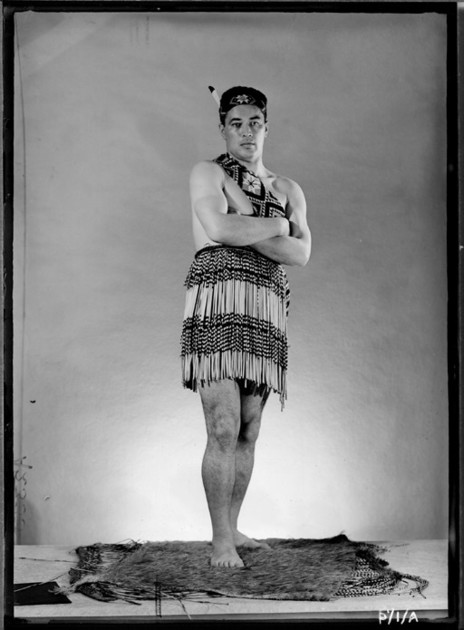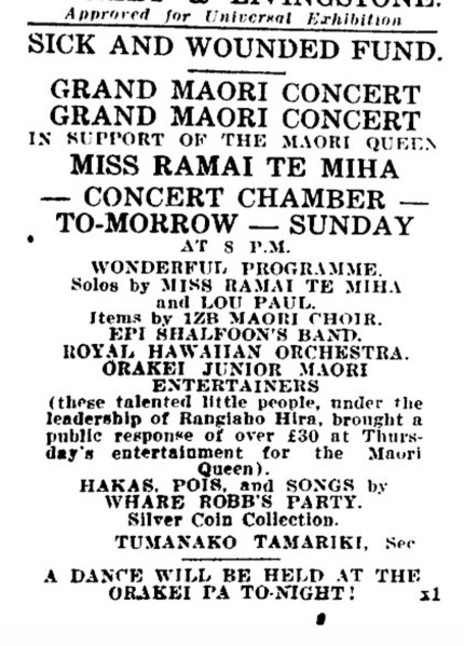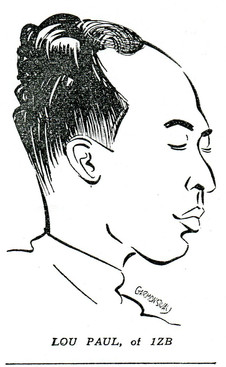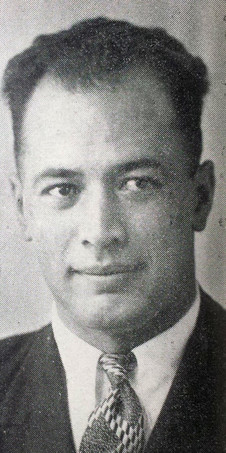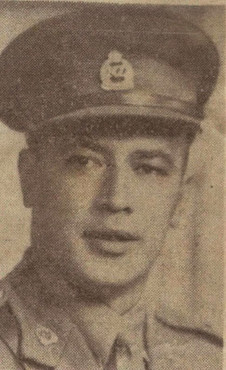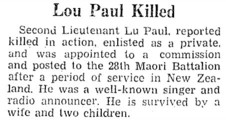Just 32 when he died Paul had already achieved several milestones. Born Uramao Otene Paora Kawharu (Te Taou, Ngāti Whātua), he emerged on the Auckland music scene in 1934, when the Civic Theatre held a competition to pick a vocalist for the in-house big band run by Chips Healy. By early 1935 Paul was singing live to 1ZB from the Civic, alongside Barrie Brettoner (“Australia’s wonder organist”) and the “glorious soprano” of Edna Murray.
Later that year the entire Civic Wintergarden band – including Paul – quit to take up a residency in Sydney. But their plans were stymied by the Australian Musicians’ Union, who refused to let the New Zealanders work as a unit. Some stayed to join Australian bands, others – like Chips Healy and the star trumpeter Vern Wilson – skulked back home.
Paul performed in Sydney for a year, using the stage name Ruru Paul. He built an audience in cabarets and on radio, and studied “musical technique and composition”. On his return to Auckland, he continued to sing in dance halls and cinemas.
At the Civic in April 1936 he received top billing as Uruamo Paora, the “Melody King of the South Seas”. A dance at the Orakei marae of Ngāti Whātua in 1936 saw him accompanied by a guitar, and he told an Auckland Star reporter of his intention to make a study of traditional Māori music.
DRESSED AS AN IMPOSING MĀORI WARRIOR, IN MARCH 1938 PAUL WAS ON THE COVER OF THE ‘RADIO RECORD’.
Radio was all powerful at the time and – due to his regular live broadcasts with the Civic band – Paul became a star on 1ZB. His fame increased when he was one of several Māori recruited by Colin Scrimgeour to host programmes on the commercial stations (another was the songwriter Kīngi Tāhiwi). Scrimgeour believed that this could “contribute something of permanent benefit to the Māori race,” and improve the Anglicised pronunciation of te reo, which much of the Pakeha audience thought acceptable.
Among the radio shows Paul hosted were Lou Paul and the 1ZB Choir – which featured his band and singers, “Lu Paul and the Māori Maidens” – and Lou Paul’s Hawaiian Session. Every two weeks he read a 15-minute summary of Māori news (these were probably in English and covered entertainment events). He also sang on The Digger’s Session, aimed at New Zealand veterans of the 1914-18 war.
Paul’s wife was a Pākehā named Tui, and they had two children, Aroha and Lou. Tui Paul told young Lou that his father was “the Howard Morrison of his day”. Dressed as an imposing Māori warrior, in March 1938 Paul was featured on the cover of the Radio Record, the 1930s equivalent of the Listener. A photograph in a November 1939 issue has a caption describing him as a “golden-voiced tenor” popular as a 1ZB announcer. “His favourite song is ‘Trees’, he is married, and is enthusiastic about the guitar.”
He took part in jam sessions in a large room above a Newton shop called The Outlet, alongside top players such as Chips Healy, Jimmy Watters, Jim Foley, and acclaimed Māori trumpeter Phil Campbell. Paul had “one of the best ranges of any singer I ever heard,” recalled Foley, an influential jazz pianist. A jazz quartet formed from these sessions occasionally broadcast on 1ZB.
During his time at 1ZB, Paul recorded several songs, and worked with Selwyn Toogood. Ten years before ‘Blue Smoke’ was made, Paul recorded a couple of New Zealand originals in Auckland: ‘King Tāwhiao’ and ‘Beneath the Māori Moon’. Both were written by Auckland music teacher Walter Smith.
When war was declared in September 1939, Paul enlisted as a private; 1ZB wanted him to be a war correspondent, but he refused. A month later, Paul’s rendition of ‘King Tāwhiao’ – about the chief on the £10 note – was getting airplay on 1ZB’s Māori programme .
On both recordings Paul was backed by the big dance band of Ted Croad. ‘Beneath the Māori Moon’ was recorded at Beacon Studios in Auckland, and its limited run of 78s was pressed in the US. “It really is a swell disc,” wrote local music columnist Bert Peterson, “and Vern Wilson’s trumpet chorus is a gem.”
Paul spent part of his military training in the Far North; at the village of Ōhaeawai near Kaikohe he sang in the local hall at the regular dances held for the soldiers. (Another who performed there was Sgt-Major Anania Amohau, who co-wrote the ‘Māori Battalion’ song.)
Serving with 28 Māori Battalion, Paul reached the rank of second lieutenant. In Egypt and Italy he was often asked to sing ‘The Lord’s Prayer’ at social functions.
The night before a big battle in Italy, Paul sang ‘The Lord’s Prayer’ to 10,000 New Zealand soldiers.
Lou Jr was a toddler when his father died, so he has no direct memories of him. In ‘Mystery soldier’s past revealed’, a 2006 article in the North Shore Times-Advertiser, he related what he had been told about his father’s death to reporter Melanie Appleton:
“The night before a big battle at the Sangro River the young man sang ‘The Lord’s Prayer’ to 10,000 New Zealand soldiers in a special performance,” she wrote. “It had the resilient men in tears. The next day they faced the Germans.”
Paul stepped on the mine after receiving his company’s orders, when walking back to his men. He was “badly wounded and before his fellow soldiers had a chance to return and rescue him, Germans booby-trapped him as he lay wounded. His comrades wanted to pull the young soldier to safety but Mr Paul says his father kept waving the men away because he knew the danger was too great.
“He lay there for two days and two nights before soldiers went in to pull him out. The movement set off the booby-trap and the young soldier and his brave rescuers died in the explosion.”
Apart from his pioneering work as a Māori broadcaster, Paul’s legacy includes his early recordings in the Māori popular song genre. Copies of ‘King Tāwhiao’ and ‘Beneath the Māori Moon’ are held at Ngā Taonga Sound & Vision, as well as a moving live broadcast from 1937. As the Samoan Clipper – the first scheduled Pan American flying boat to visit New Zealand – takes off from Auckland Harbour on its journey home to San Francisco, via Pago Pago, Paul sings ‘Po Atarau’ (‘Now is the Hour’).
Lou and Tui Paul’s children both became involved in entertainment. In 1959 the magazine Te Ao Hou reported that “Anna” Paul was to tour the world with an international dance troupe. Lou Jr picked up the guitar at a young age, became a member of the Māori Premiers showband, and toured Australia and New Zealand as a solo artist.
